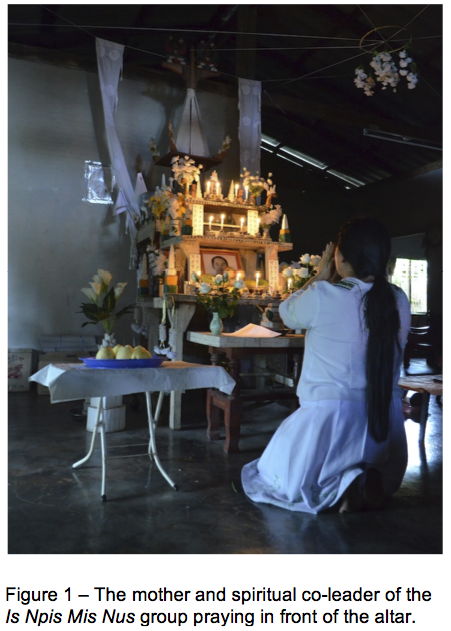Belinda Ramirez and Dr. Jacob Hickman, Department of Anthropology
As a sociocultural anthropology major, my ORCA project entailed spending three months on an ethnographic study. I chose to conduct this study in northern Thailand among the Hmong, a small hill tribe ethnic group. During my stay in a Hmong community near Pua, Nan Province, I spent much of my time with a small messianic religious group known as Is Npis Mis Nus (pronounced “ee bee mee new”), or Is Npis for short. My goals were to understand the various concepts of nationalism and ethnicity for both the Is Npis and the Hmong in general, which I ascertained largely through interviews and participant observation. As I got to know the Is Npis and their beliefs, my research questions developed into the following: “Why is there a need for the Is Npis Mis Nus religion? What does their religion provide that the Hmong do not already have? And why is there tension between messianic and non-messianic Hmong?”
In my post-field analysis, I demonstrate that the development of the Is Npis group (and other similar Hmong messianic religious groups) is an extension of Hmong displacement during the Indochinese wars. The resulting loss of ethnic identity and sense of place paved the way for the establishment of religious groups stressing the importance of nationhood and “Hmongness”. More importantly, however, the rituals and beliefs of the Is Npis Mis Nus reveal the group’s desire for Hmong political, cultural, and economic legitimacy and national sovereignty. These rituals also serve as tools to help form their identity, providing a clear distinction between messianic and non-messianic Hmong. This, coupled with the fact that non-messianic Hmong derive a sense of legitimacy from the Thai state, is what creates the tension between the two Hmong groups.
These results were not the ones I was expecting. In fact, as I began learning more about the Is Npis, I believed I would study their ideas of and connection to the Thai state. Although many of the questions I asked pertained to this conception, I realized in my analysis that the participants often referred to ways in which the Hmong were a fallen people and needed to disabuse themselves of their old ways. I could not force what I thought I would write about when it was obvious that the Is Npis thought something else was much more important.
The biggest accomplishment with my project was my acceptance into the Is Npis Mis Nus messianic group. The family that comprises the membership of this group took me in as one of their own, especially as I took the time to teach English to their children and displayed interest in their belief system. The youth of the group became my friends and they were crucial to understanding the Is Npis and acquiring data. I learned so much spending time with them—not only about their religion, but also about how religion is approached and interpreted by others. Working past cultural and linguistic barriers to achieve a high level of familiarity with the Is Npis group has been my greatest accomplishment.
I have been fortunate enough to receive many opportunities resulting from my mentored ORCA project. I am presenting my work at the American Anthropological Association’s (AAA) annual meeting this November and I have also been accepted to present at the National Social Science Association Conference in March. Additionally, I have received the Carrie-Hunter Tate Award for my scholastic achievements and for presenting at the AAA annual meetings for the first time. I have applied to several other conferences at which to present my work and there are other grant opportunities that I look forward to. None of these experiences would have been possible without my mentored research project, and therefore without ORCA funding.
A special thank you to Dr. Jacob Hickman, Mai See Xiong, Jared Spencer, Xiong Lee, and Seth Meyers for helping me with my project as translators, mentors, supporters, and Hmong experts. And, of course, I am indebted to the Is Npis Mis Nus for their taking me in and allowing me into their home.


